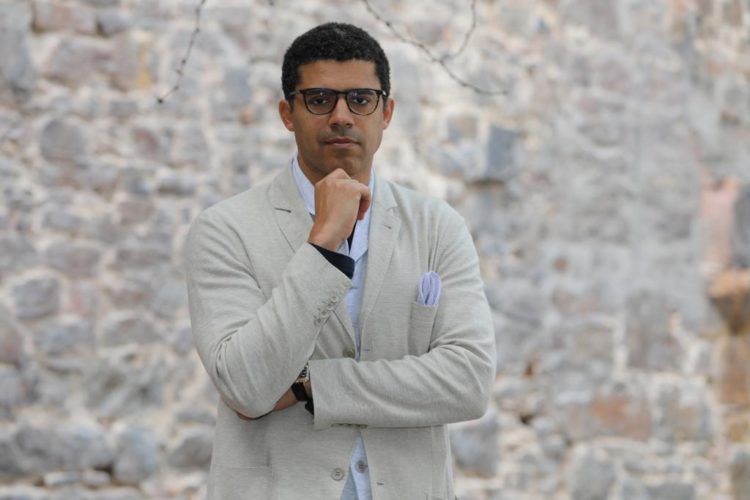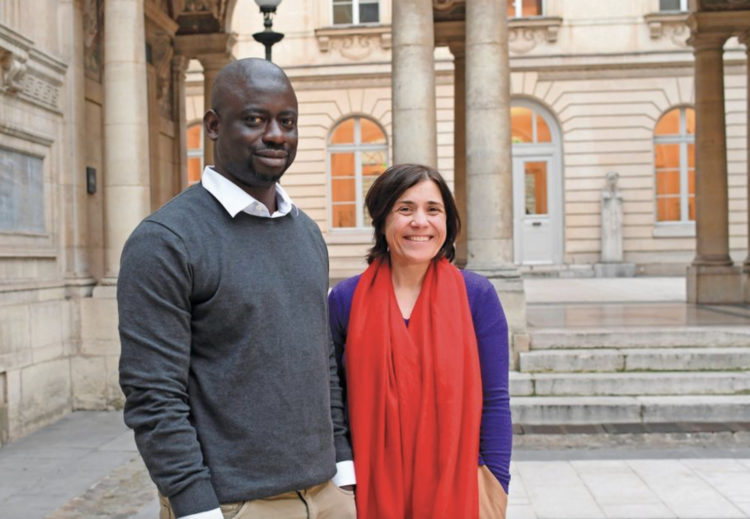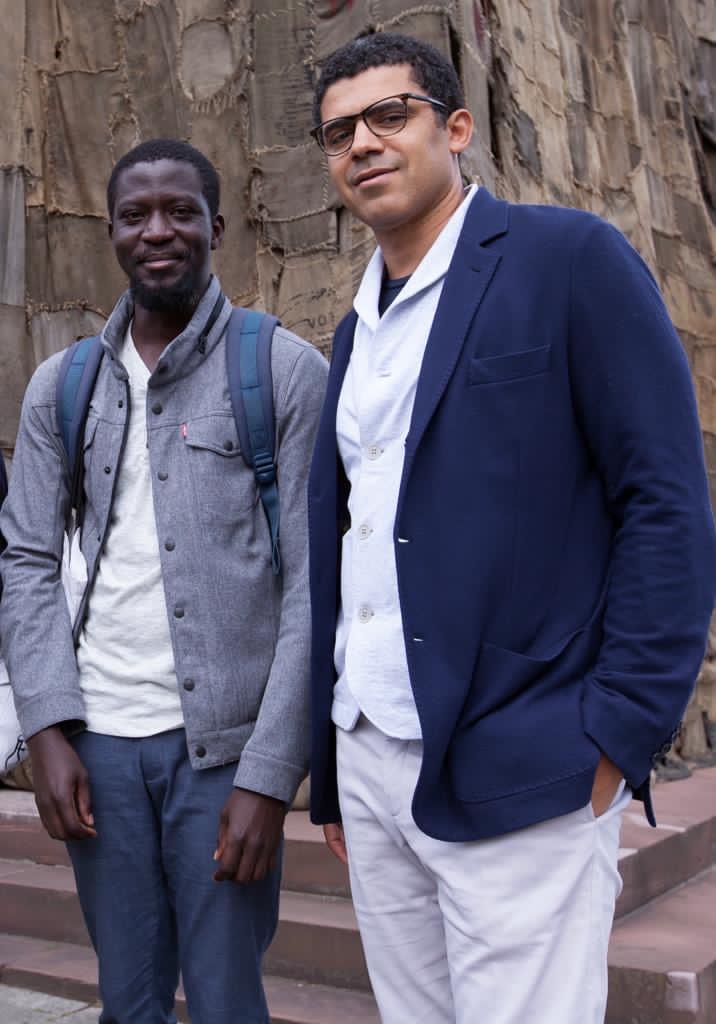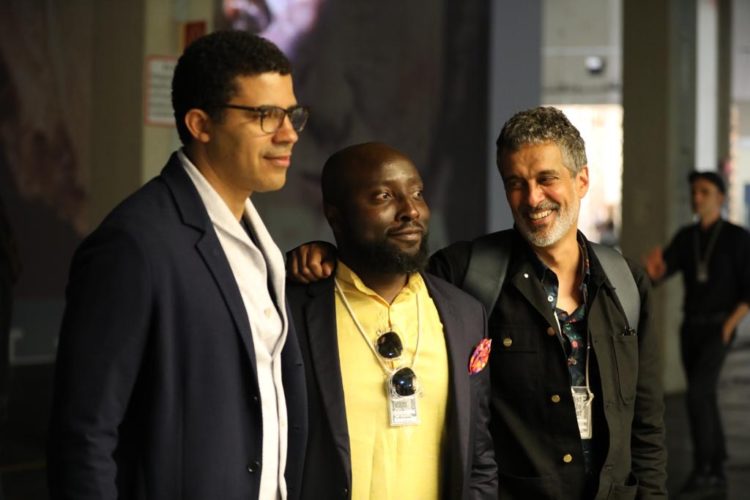We at TRUE Africa are mourning the untimely death, at the age of 48, of our friend and supporter Sindika Dokolo. An experienced diver, Dokolo went into the sea in Dubai (where his family has a home on an artificial island) in the morning of October 29th, and ended up dying in an accident.

One of our original TRUE AFRICA 100 innovators, opinion-formers, game-changers, pioneers, dreamers and mavericks who we feel are shaping the Africa of today, he made the list in our inaugural 2015 edition because we were impressed by his efforts to bring African art back to Africa.
Born in Kinshasa to the Congolese banker and art collector Augustin Dokolo and his Danish wife Hanne Kruse, Sindika Dokolo was educated in Paris. He was married, and he was the father of five children.
— Isabel Dos Santos (@isabelaangola) October 29, 2020
As a leader of what became a major restitution effort, which might have influenced certain statements made by world leaders including the French president Emmanuel Macron, Dokolo picked his battles wisely and emerged as a charismatic figure who was set on challenging the art establishment.
In November 2018, he and I exchanged emails shortly after the publication of a landmark report that had been drafted by the Senegalese writer and economist Felmine Sarr and the French art historian Bénédicte Savoy. President Macron had commissioned the report, but I remember that Dokolo was one of the first voices to say publicly that European countries should permanently and immediately restitute all art stolen from Africa during the colonial era.

The Sarr-Savoy report was seminal, because it led to a big promise. President Macron declared that 26 ceremonial items that were taken from Benin by the French army in the nineteenth century before eventually finding a home in France’s largest ethnographic museum, the Musée du quai Branly-Jacques Chirac near the Eiffel Tower in Paris, would be returned to Benin.
Back in October 2015, I remember asking Dokolo why he was on this crusade for African art. He told me stories about the various ways the art had been stolen in his own country. He explained how many of the dynamics that led to those thefts had to do with attempts to destroy community, kinship and matrilineal descent systems in central African societies, including in the nations that are now known as the Democratic Republic of Congo and Angola.
Specifically, he was obsessed with certain looted Chokwe masks that he felt should be returned to the Dundo Museum in Angola, where his wife Isabel dos Santos is from.
“I’ve been into art for a long time,” he told me. “And I’ve been a collector for a long time. My father had initiated me to classical African art, back when I was a young child. So I realized that some of these pieces were priceless. I think the last transaction on the open market for one of these pieces might have been around 20 or 30 million dollars, and I was really amazed that, save for a few notable exceptions like the Ife Museum in Nigeria, there were no masterpieces of classical African art on the African continent.”
Artists, curators, critics, and fellow collectors have been paying tribute to Sindika Dokolo for the past 48 hours, and I was relieved that for the most part they chose not to focus on the corruption allegations that he and his Angolan-Russian billionaire wife had been facing since the International Consortium of Investigative Journalists (ICIJ) published a detailed report, on January 19th 2020, on how the Dos Santos-Dokolo couple amassed their wealth over the years.

Sindika Dokolo was known to most of us in the global African culture community as a generous benefactor who was impressive for his quick wit, vast knowledge, and uncanny ability to help make artistic projects happen, whether it was the groundbreaking Luanda Triennale in 2006, the controversial African Pavilion at the 2007 Venice Biennale, or even the then nascent 1-54 Art Fair in London in 2014.

In June 2019, he presented, as part of their “Afropolitan” series, a wonderful exhibition at the BOZAR Center for Fine Arts in Brussels. Co-created by the artist Kendell Geers, with many works coming from his own Sindika Dokolo Collection, IncarNations was “a fascinating initiative that reflects the diversity of the African artistic heritage, from an Afrocentric point of view and including the itineraries of slaves, colonialism and independence movements.”
IncarNations featured many artists who can be said to be at the top of their game, including Nick Cave, Wangechi Mutu, Yinka Shonibare, Pascale Marthine Tayou, Kehinde Wiley, Aida Muluneh, Hank Willis Thomas, Adrian Piper, and Zanele Muholi.

The exhibition quoted the Senegalese philosopher Souleymane Bachir Diagne, who wrote that “ethnographic museums are a negation of art because they prevent the objects on display from really looking at us. Because ethnography is constituted, at its colonial origins, as a science of what is radically other, it is in its nature to fabricate strangeness, otherness, separateness”.
Bomi Odufunade, a London-based Nigerian-British art advisor who worked with Dokolo for more than five years says he was an inspiration. “His energy and passion for ‘our’ culture brought together so many of us, all from disparate countries, speaking different languages, including French, English, Portuguese. We were united in love for ‘our’ continent and defiant in the decimation of our heritage due to colonialism. It was a joy knowing him and a pleasure to have experienced part of the journey with him.”
In my many dialogs with Dokolo, I got to enjoy the way he encouraged us to be proud of our African heritage. I was fascinated by his belief that a better appreciation of our culture could make our continent stronger, and I was impressed with the way he connected the dots between popular culture, the world of fine art and today’s borderless economies.
What I interviewed him in 2015 for our TRUE Africa 100 story, I asked him who his African of the year was. His answer was quite unexpected. “Samuel Eto’o. And not just because he’s a good friend. I’ve heard and I’ve read interviews with him, and what I like is that he has managed to become extremely successful without compromising in any way. He is one of the few Africans evolving in environments that are not controlled by Africans, who has remained very comfortable with who he is.”
“He is comfortable with his values, with his ideas, and at the same time he has clear judgments on everything that surrounds him. He doesn’t try to be accepted by the audience, and he always tells it the way it is. That means he is the center of gravity of his own self, and that is something that is very difficult, and very rare for any African, especially for one that lives abroad.”
When I re-read that interview this morning, I realized that Sindika Dokolo could have been talking about himself.
